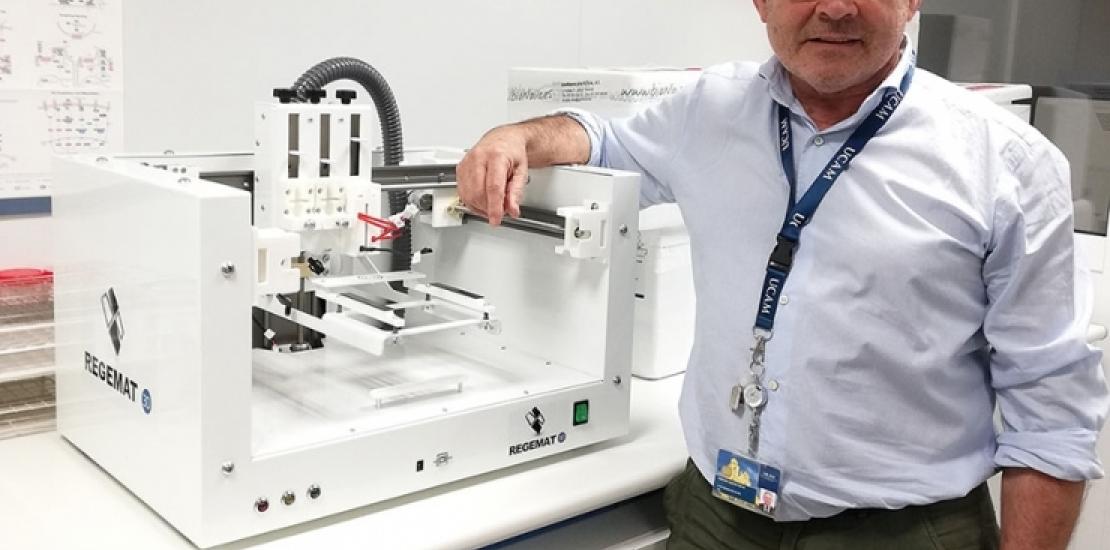UCAM researchers patent a new biomaterial to regenerate bone
One of the advantages it offers is that it is not rejected and is easily fixed to the tissue where it is implanted. It would avoid removing bone tissue from another part of the patient’s own body or using donor bones to repair any bone defect.
Currently, when bone reconstruction is necessary, the most commonly used technique is autografting, which consists in taking bone tissue from another area of the skeleton (donor site) of the same patient, either from the same bone or another. However, this procedure has some disadvantages or inconveniences such as the sacrifice of the donor site, which can cause a disruption to the patient in up to 25% of cases, in addition to the limited availability when large amounts of bone are needed to be grafted. Another technique is the allogeneic graft (from a deceased donor). In this case, the main drawback is the possibility of transmitting donor diseases.
In view of this situation, a group of UCAM researchers, belonging to the Laboratory of Regeneration and Reparation of Tissues-Biomaterials and Tissue Engineering, led by traumatologist and professor Luis Meseguer-Olmo, began to research the obtaining of biocompatible and bioactive porous materials from rough surface to use them as “substitutes for bone grafts” in those clinical situations in which biological stimuli are required to achieve bone regeneration. From this researches the patent emerges, a formula to obtain a new biomaterial whose main components are α-calcium sulfate hemihydrate, β-tricalcium phosphate and dicalcium silicate, and which could be used for bone reconstructive surgery in general, in the medical fields of traumatology and orthopaedic surgery, oral surgery, maxillofacial surgery and neurosurgery.
Among the advantages of this new material, which has been tested on animals, it is worth noting the fact that it is not rejected, it is easily fixed to the material where it is implanted, and the fact that the cost of production is far lower than that of current biomaterials, so its application would mean significant savings compared to the techniques currently used. In the same way, Dr Meseguer-Olmo points out that “the material has proved to be biocompatible, showing no signs of cytotoxicity; in addition, it is able to absorb proteins on its surface and something inside it, and to be highly bioactive, which facilitates cell adhesion and proliferation on the surface of the material”.
Furthermore, this new compound keeps the temperature at room level (22ºC) during the entire setting process, which prevents it from causing cell damage, unlike the bone cements used to fix some compounds of the prosthesis, which produce high temperatures while consolidating.
Currently, UCAM, through its Research Result Transfer Office (OTRI), is processing the registration of 10 new patents at national and international level, mainly in the field of health, sports and food sciences. In order for society to benefit from the knowledge protected in the patents, it is necessary to license the rights to exploit them to companies able to produce new products and to place them on the market.




